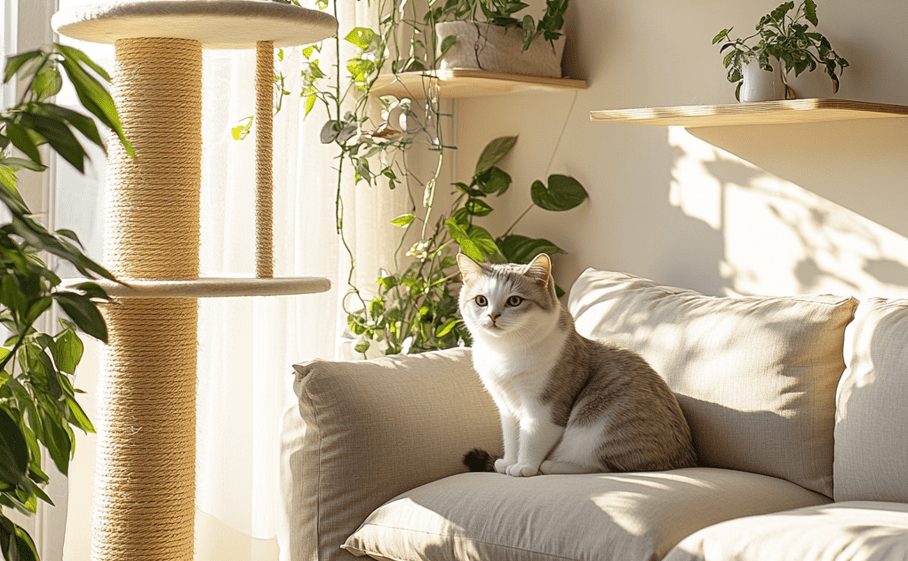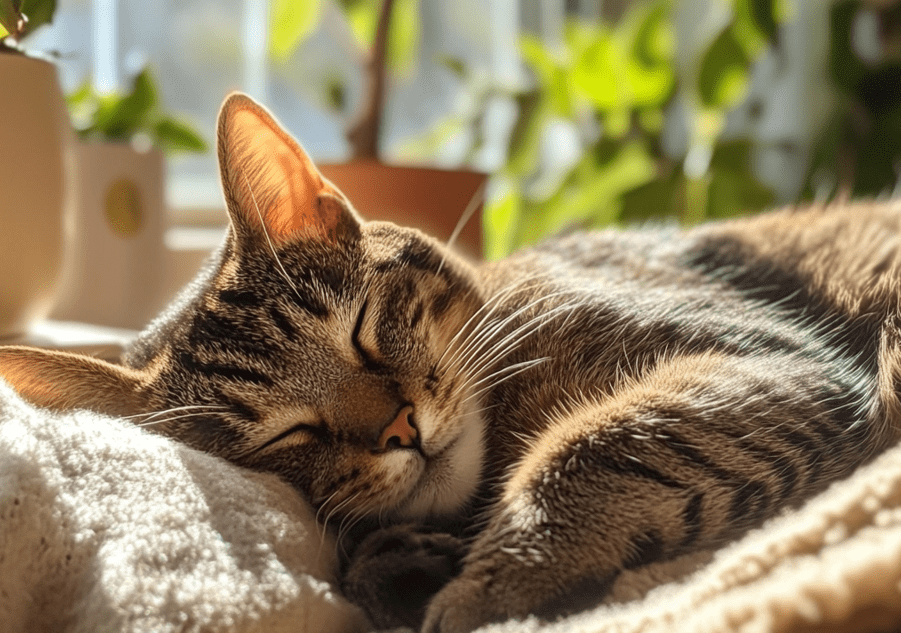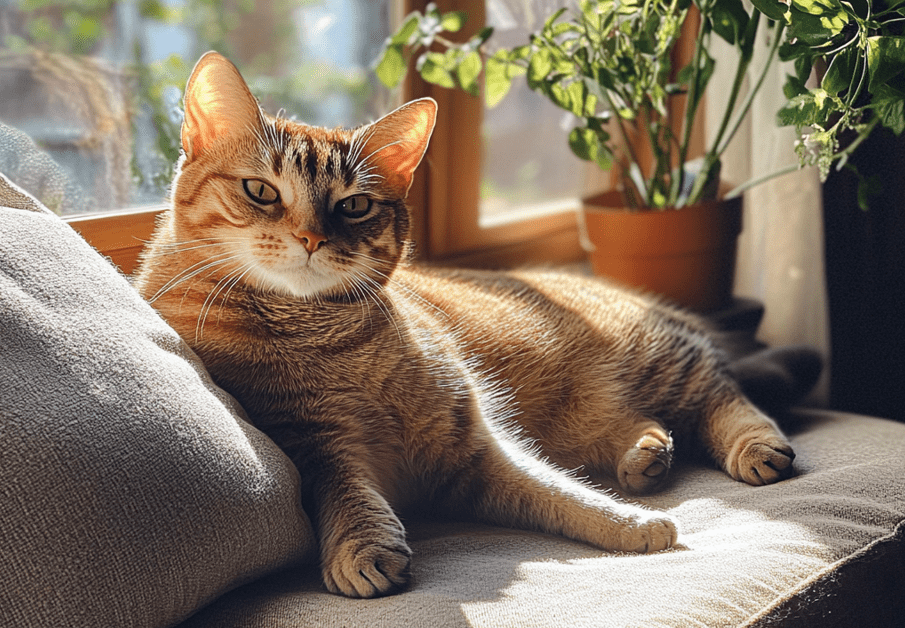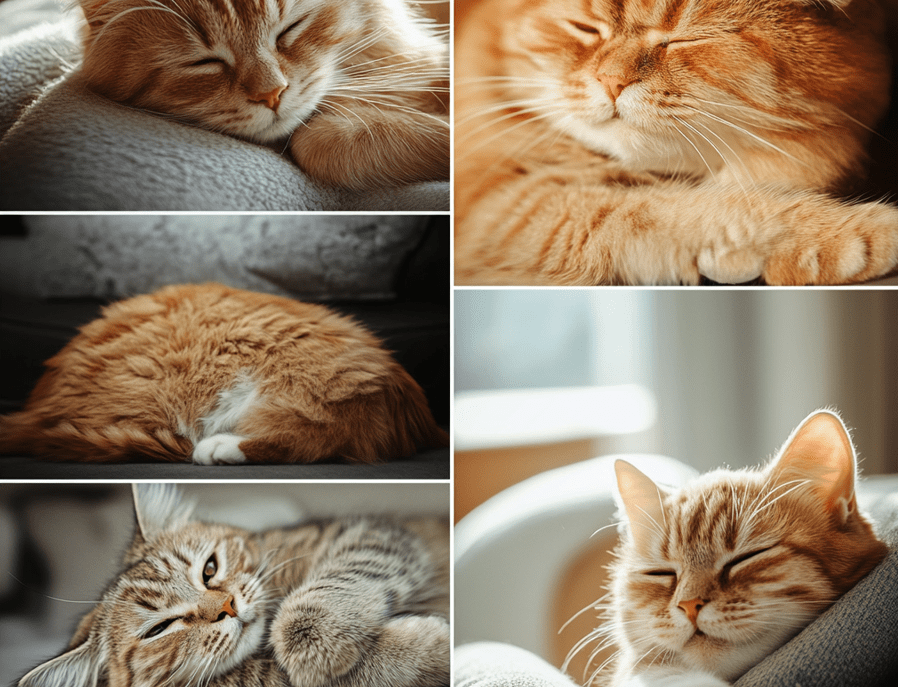
Cats communicate with other cats or other animals through vocalization, visual behaviors, haptic communications, olfactory communications, and body language. A cat’s communication depends on its behavior. When cats try to communicate with others, then they change their normal behavior. So, understanding cat behavior changes is important to understand or realize their needs and problems.
In an experiment, it is found that homies cats tend to meow much more than outdoor cats. Outdoor cats rarely meow to communicate with the subordinate cat. Outdoor cats use other communication media than indoor cats.
Cats don’t like to change anything. They always follow habits. However, various factors can trigger changes in their behavior. To address any issues of your cat and to ensure your feline friend remains healthy and happy you have to understand these reasons.
To watch the summary of this article, just watch this video-
Common Reasons for Cat Behavior Changes
There are some common reasons for behavior changes in cats:
Health Problems and Stress and Anxiety

The behavioral changes in cats happen due to health problems. It is a major cause of the behavioral changes in cats. Health problems like Pain, discomfort, or illness can lead to changes such as increased vocalization, aggression, hiding, or changes in eating and litter box habits. Conditions like dental issues, arthritis, urinary tract infections, and gastrointestinal problems can all impact a cat’s behavior.
Cats are so sensitive to changes in their environment and routine. Stress elements such as moving to a new home, the introduction of new pets or family members, loud noises, and even changes in furniture placement can cause anxiety in your cats. This can change behaviors of your cats like hiding, excessive grooming, or aggression.
Aging
As cats age, they may experience changes in their behavior. Senior cats can develop conditions like arthritis, cognitive dysfunction (similar to dementia in humans), and sensory decline (such as loss of vision or hearing). These changes can lead to decreased activity, increased vocalization, and alterations in sleeping patterns.
Boredom and Lack of Stimulation
Cats need mental and physical stimulation to stay happy and healthy. A lack of enrichment can lead to behaviors such as excessive grooming, aggression, and destructive activities. Providing interactive toys, climbing structures, and regular playtime can help mitigate these issues.
Diet and Nutrition
A poor diet or changes in feeding routines can affect a cat’s behavior. Nutritional deficiencies can lead to lethargy, aggression, or anxiety. It’s important to provide a balanced diet and monitor for any adverse reactions to new foods.
Territorial Issues
Cats are territorial animals, and changes in their territory can lead to behavior changes. This can include the introduction of new pets, new people, or even a new scent in the home. Territorial disputes can cause aggression, spraying, and other stress-related behaviors.
Seasonal Changes
Changes in seasons and weather can also affect a cat’s behavior. For example, increased daylight in the summer months can lead to more activity, while colder weather can result in more sleep and less play.
Lack of Socialization
Cats that aren’t properly socialized may exhibit fearful or aggressive behaviors. Lack of socialization can result in a cat being wary of people, other animals, or new environments. Regular, positive interactions with humans and other pets can help improve their social skills.
Changes in Household Dynamics
Changes in the household, such as a new baby, a family member moving out, or a new pet, can significantly impact a cat’s behavior. These changes can cause stress and anxiety, leading to alterations in their normal behavior patterns.
Hormonal Changes
Hormonal changes, particularly in unsprayed or unneutered cats, can lead to behavioral issues. Mating behaviors such as spraying, increased vocalization, and aggression can be mitigated through spaying or neutering.
Recognition of the Signs of Behavioral Changes
In discomfort situations, Cats are experts at hiding. However, if you early want to know their health condition and to ensure their overall well-being, you have to recognize subtle changes in their behavior. There are some key signs that may reason for behavioral changes in your cat:
Changes in Vocalization
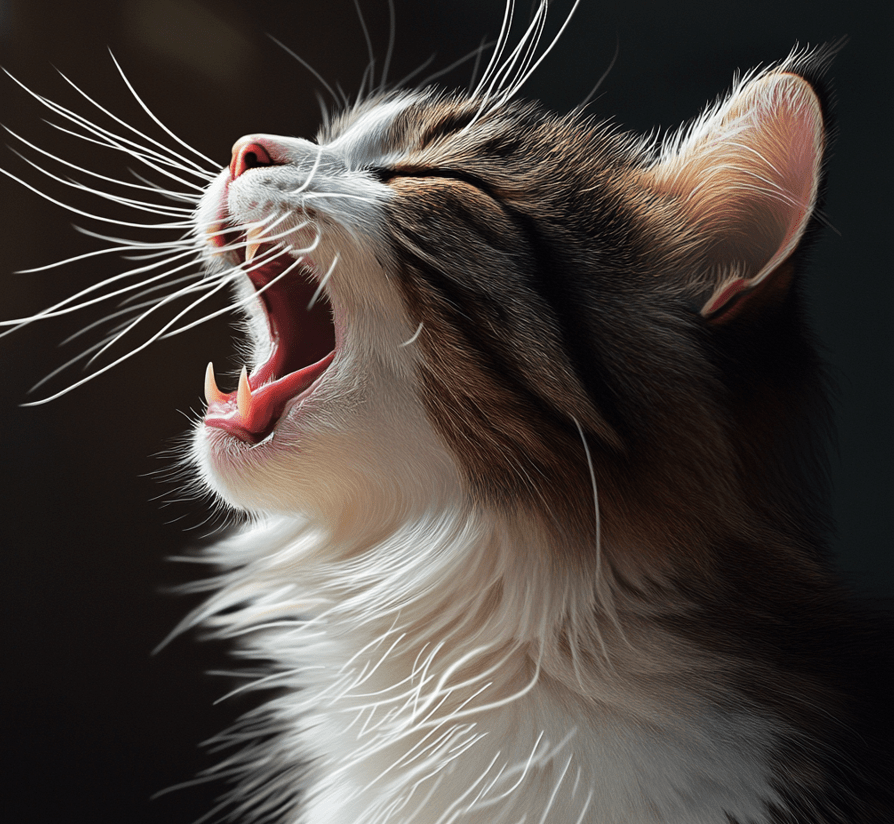
Changes in vocalization are a serious sign of discomfort. If your cat starts meowing more or less than usual, it could be a sign of stress, discomfort, or a health issue. You have to pay attention to the type and frequency of the vocalizations. Increased meowing can indicate hunger, pain, or a need for attention, while reduced vocalization might suggest depression or illness.
Alterations in Grooming Habits
Cats are typically meticulous groomers. Excessive grooming can lead to hair loss or skin irritation and might indicate stress or skin conditions. Conversely, a decrease in grooming can suggest pain (like arthritis), dental issues, or other health problems.
Changes in Litter Box Use
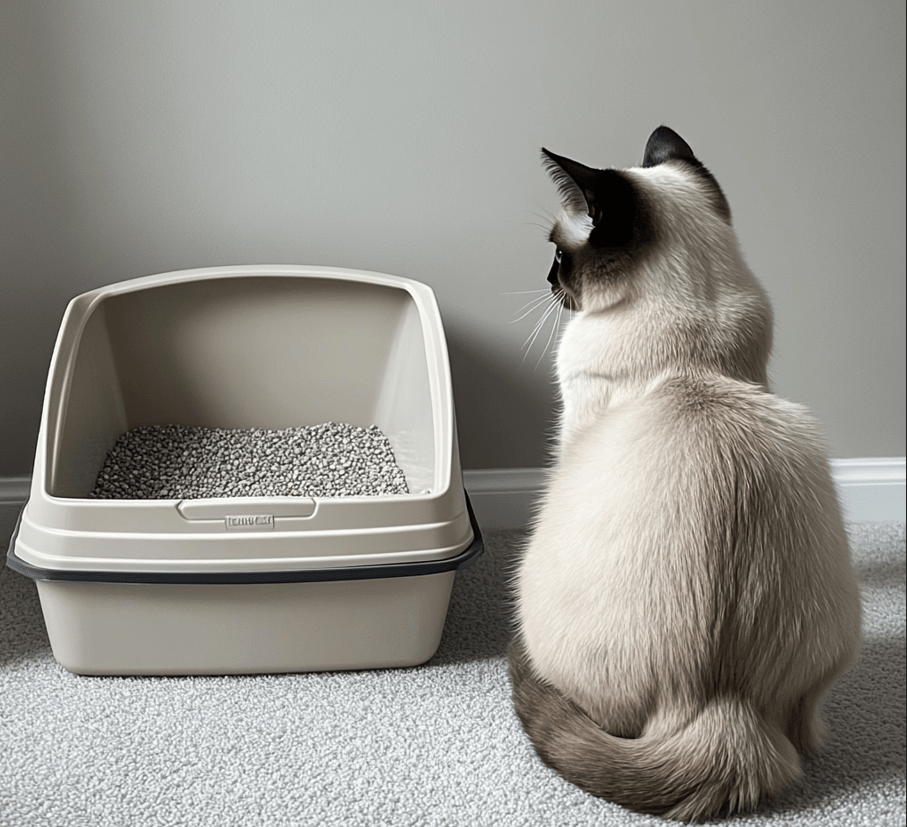
A potty-trained cat usually does not potty here and there. A sudden change in litter box habits, such as urinating outside the box or frequent visits without using it, can be a sign of urinary tract infections, kidney disease, or other medical conditions. It can also indicate stress or dissatisfaction with the litter box itself (location, cleanliness, type of litter).
Altered Eating and Drinking Patterns
Any significant changes in your cat’s appetite or drinking habits should be noted. Increased thirst can be a sign of diabetes or kidney disease, while a decrease in appetite could indicate dental issues, gastrointestinal problems, or other health concerns.
Increased Aggression or Fearfulness
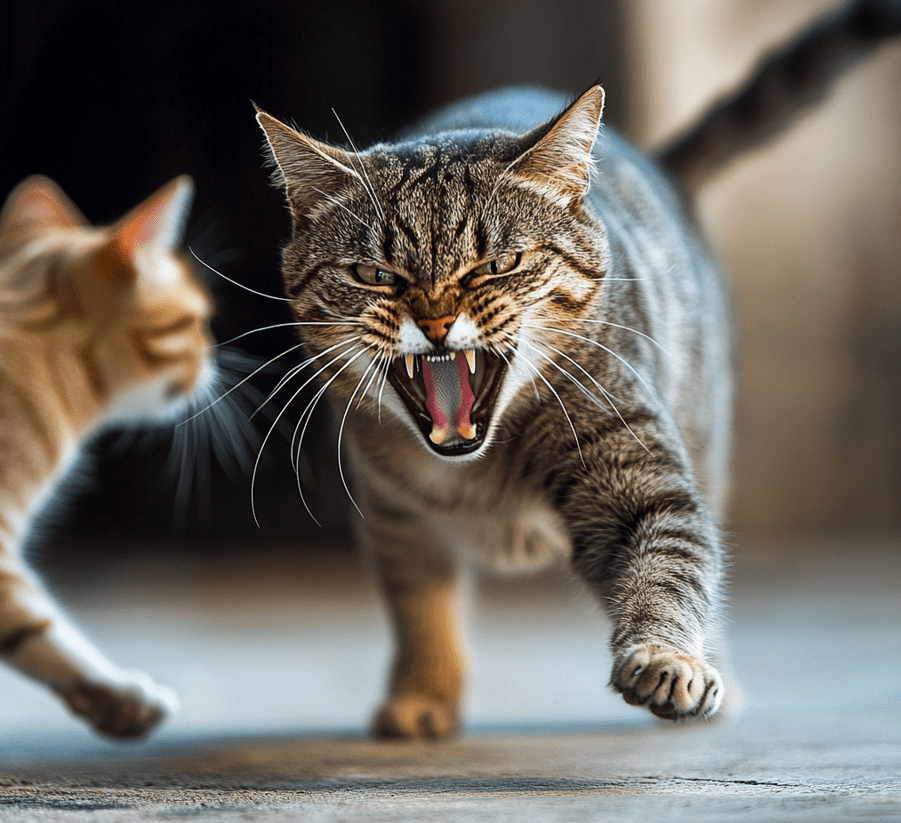
If your cat becomes more aggressive or fearful than usual, it might be experiencing pain, fear, or anxiety. This could be due to changes in the household, new pets, or even underlying health problems.
Hiding or Avoidance
Cats often hide when they are feeling unwell or stressed. If your cat starts spending more time in hiding spots or avoids interaction, it could be a sign of illness, pain, or anxiety.
Changes in Activity Levels
Sudden hyperactivity or lethargy can indicate boredom, lack of stimulation, or health issues. Older cats might slow down due to arthritis or other age-related conditions, while sudden bursts of energy could be due to stress or excitement.
Excessive Scratching or Chewing
Increased scratching or chewing, especially when focused on a specific area, can indicate skin irritations, allergies, or infestations (like fleas). It can also be a sign of anxiety or boredom.
Unusual Postures or Movements
Limping, difficulty jumping, or changes in posture can indicate pain or discomfort. Observing these signs can help you identify issues like arthritis or injuries early.
Changes in Social Behavior
If your cat becomes more clingy or aloof than usual, it might be experiencing stress, anxiety, or health problems. A sudden need for constant attention or complete withdrawal from social interactions can both be red flags.
Response to behavioral changes:
If behavioral changes in your cat are found, you have to take these steps:

Observe and Document the Changes
Observing and documentation is good for your cat. These documents help you to further treatment and tailoring care. You have to address behavior changes by observing and documenting them. You must Take note of any changes in your cat’s vocalization, grooming habits, litter box use, eating and drinking patterns, activity levels, and social behavior. Keep a record of these changes which can help you and your veterinarian identify patterns and potential causes.
Provide a Safe and Stimulating Environment
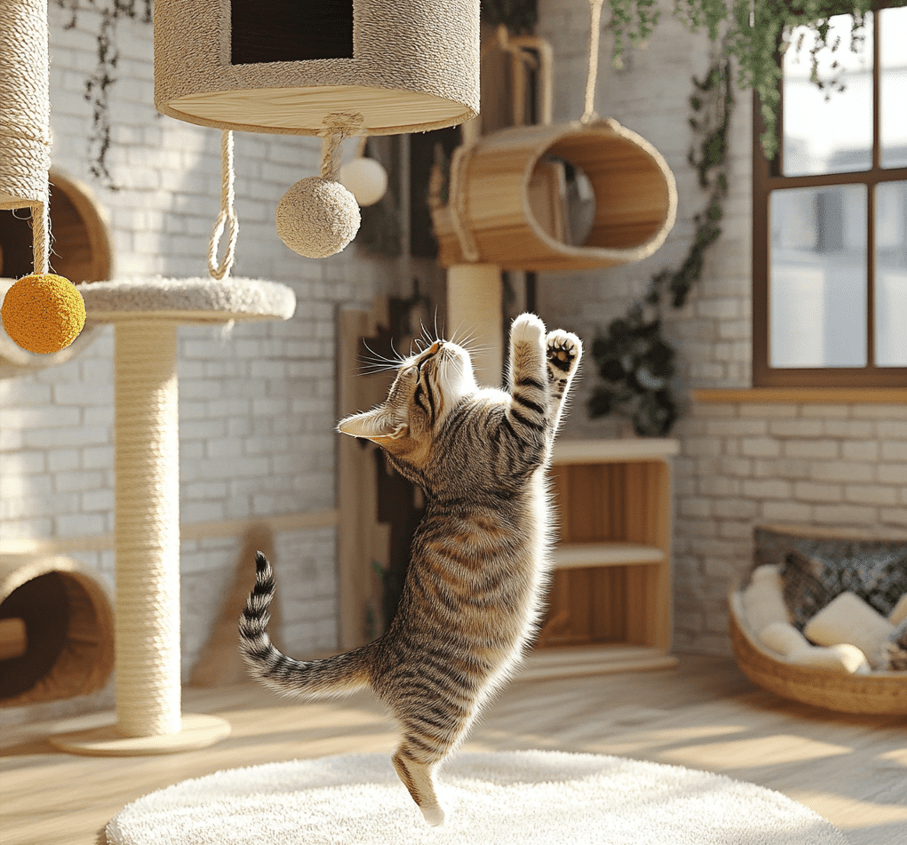
Create a safe and stimulating environment for your cat. Ensure they have access to cozy resting spots, vertical spaces like cat trees or shelves for climbing, and a variety of toys for mental stimulation. Regular playtime can help alleviate boredom and reduce stress-related behaviors.
Minimize Stressors
Identify and minimize potential stressors in your cat’s environment. This can include loud noises, new pets or family members, or changes in household dynamics. Also, sudden changes in their environment or daily schedule can cause stress and anxiety. Providing a quiet, safe space and maintaining a routine for your cat to retreat to can help reduce stress and anxiety.
Seek Professional Help
If you’re unable to determine the cause of your cat’s behavior changes or if the behaviors persist despite your efforts, consider seeking professional help. A veterinarian or a certified animal behaviorist can provide expert guidance and develop a tailored plan to address your cat’s specific needs.
Monitor Diet and Nutrition
Ensure your cat is receiving a balanced diet that meets their nutritional needs. Changes in diet can sometimes cause behavior changes, so it’s important to monitor their food and water intake. If your cat has specific dietary requirements or food sensitivities, work with your vet to find the best diet for them.

